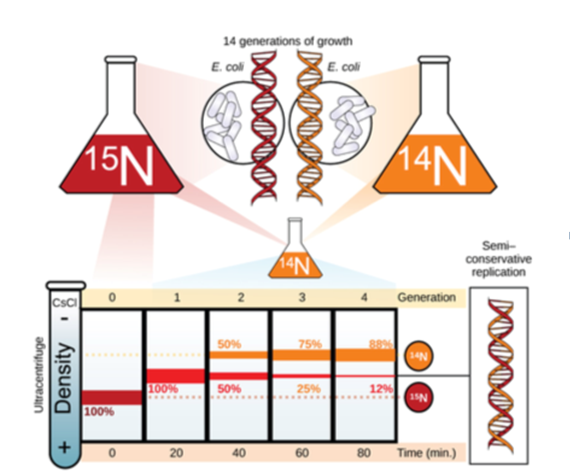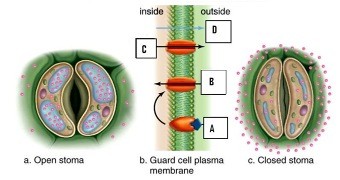A Gram stain of a wound reveals purple, spherical bacteria that divide and remain attached in grapelike clusters. These are referred to as
a. gram-positive streptococci
b. gram-negative spirochetes
c. gram-positive tetrads
d. gram-positive staphylococci
Answer: d. gram-positive staphylococci
You might also like to view...
Experiments with mouse cells indicate that long noncoding RNAs ____
a. block cardiac cell development b. play a role in cardiac cell differentiation c. are not expressed in embryonic stem cells d. are only expressed after cardiac cells have differentiated e. are transcription factors that promote cardiac cell differentiation
This diagram illustrates the results of Meselson and Stahl’s experiments with E. coli, in which they were able to demonstrate that DNA replicates according to the semi-conservative model. If DNA replication had proven to follow the dispersive model instead, how would the results of this experiment differed?

a. Equal amounts of 15N and 14N would persist through all generations.
b. The DNA containing 15N would be eliminated in the third generation.
c. More than three bands would be created during the experiment.
d. No measurable sorting of DNA would have occurred after centrifuging.
A metabolic reaction requires 10 units of enzymatic activity to proceed. If a dominant allele D can generate 8 units of enzyme and a recessive allele d can generate 2 units of enzyme, what can be said of the dominant wild-type allele?
What will be an ideal response?
Explain how abscisic acid promotes the closure of stomates. Identify the molecules involved at each step. A. ________B. ________C. ________D. ________
A. ________B. ________C. ________D. ________
What will be an ideal response?